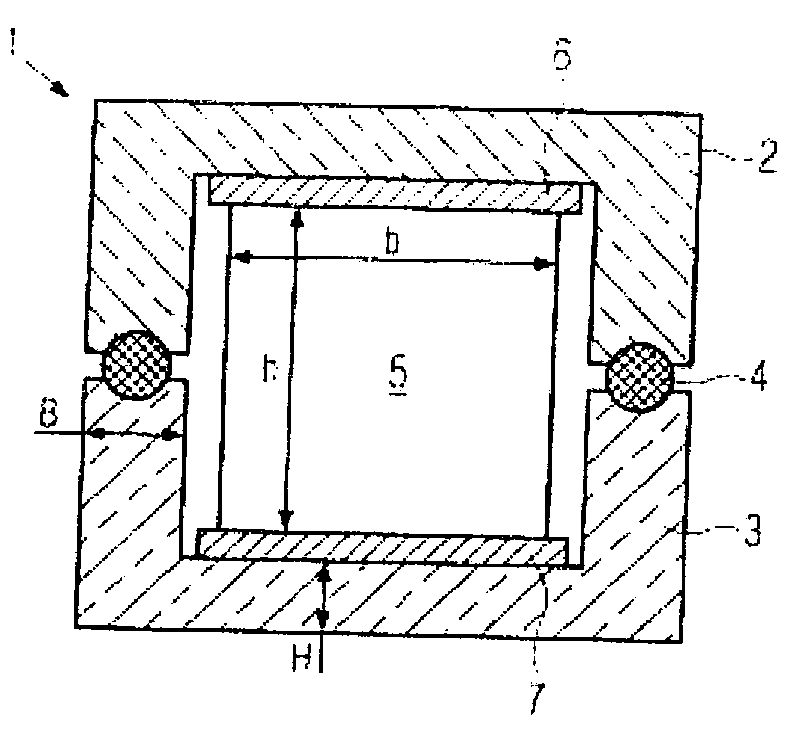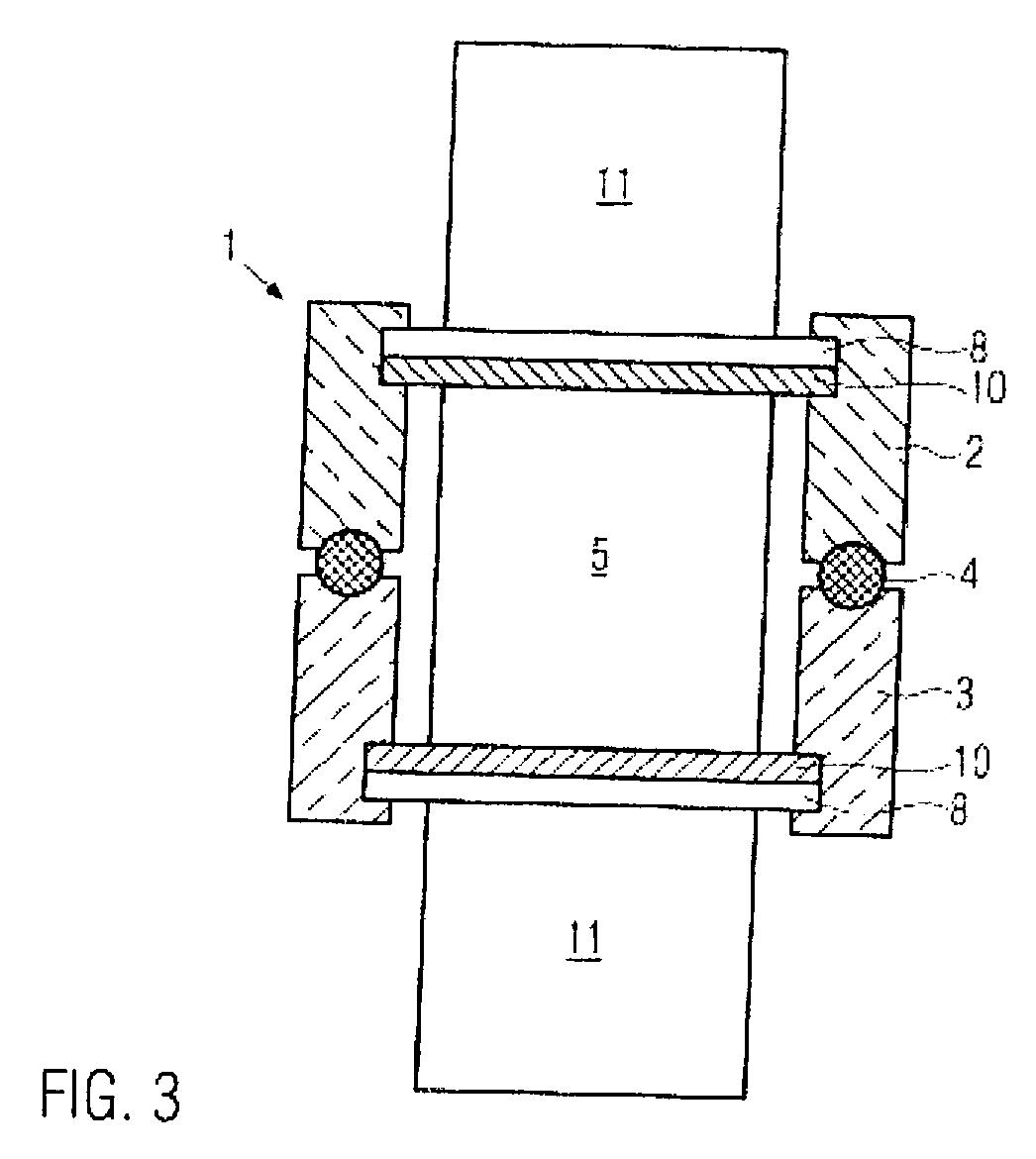Heat generating element and electric auxiliary heater for a motor vehicle with heat generating element
a technology of heat generating element and motor vehicle, which is applied in the direction of heater elements, resistors, air heaters, etc., can solve the problems of poor thermal efficiency of known heat generating elements, insufficient contact pressure, and poor conduction of heat generated by ptc elements to the outside, so as to achieve easy handling and installation
- Summary
- Abstract
- Description
- Claims
- Application Information
AI Technical Summary
Benefits of technology
Problems solved by technology
Method used
Image
Examples
first embodiment
[0033]FIG. 1 shows a cross-sectional view of a heat generating element 1 which comprises two oblong U-shaped housing elements 2, 3 which are embodied each as sintered alumina components. The webs of each individual housing element 2, 3 situated opposite to each other are lying against each other at the front side with the interposition of a sealing strip 4. The thus created space which is electrically sealed at the circumference accommodates several PTC heating elements arranged one after the other in the longitudinal direction of the heat generating element 1 (across the drawing plane), here only one heating element 5 being shown.
[0034]Between the PTC heating element 5 and the two housing elements 2, 3, sheet metal strips 6, 7 are provided each as strip conductors for feeding the PTC heating elements 5 with current. As usual, the strip conductors can project from the housing elements 2, 3, at the front end thereof to there possibly project from the outer side of a frame surrounding...
second embodiment
[0038]In FIG. 2, a cross-sectional view of a second embodiment is shown. Same components are designated with the same reference numerals with respect to the embodiment shown in FIG. 1.
[0039]The embodiment shown in FIG. 2, too, has two identical housing elements 2, 3 for facilitating production. One of the front sides of the respective housing elements 2 and 3 formed by the edges has a groove 20; a spring 21 projects from the other front side. The spring 21 of one of the housing elements 2, 3 is engaged with the complementarily formed groove 20 of the other housing element 3, 2, so that the interior of the housing 2, 3 is sealed. For this, it should be taken care that the width of the groove 20 is only slightly larger than the thickness of the spring 21. The depth of the groove 20 or the length of the spring 21 are selected such that, if PTC elements 5 are accommodated in the housing, these flatly lie against the sheet metal strips 6, 7, and that the housing elements 2, 3, in case of...
PUM
 Login to View More
Login to View More Abstract
Description
Claims
Application Information
 Login to View More
Login to View More - R&D
- Intellectual Property
- Life Sciences
- Materials
- Tech Scout
- Unparalleled Data Quality
- Higher Quality Content
- 60% Fewer Hallucinations
Browse by: Latest US Patents, China's latest patents, Technical Efficacy Thesaurus, Application Domain, Technology Topic, Popular Technical Reports.
© 2025 PatSnap. All rights reserved.Legal|Privacy policy|Modern Slavery Act Transparency Statement|Sitemap|About US| Contact US: help@patsnap.com



